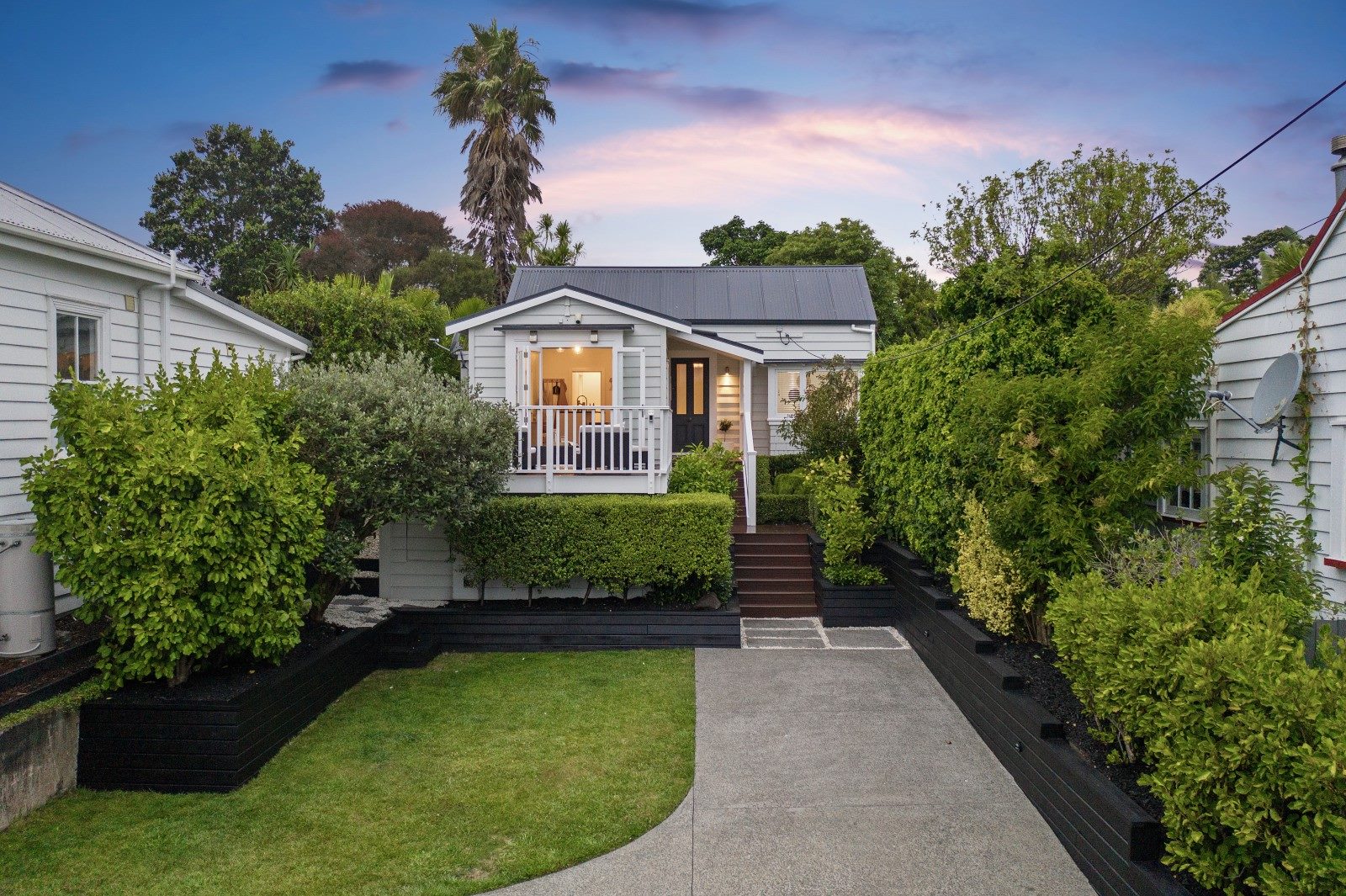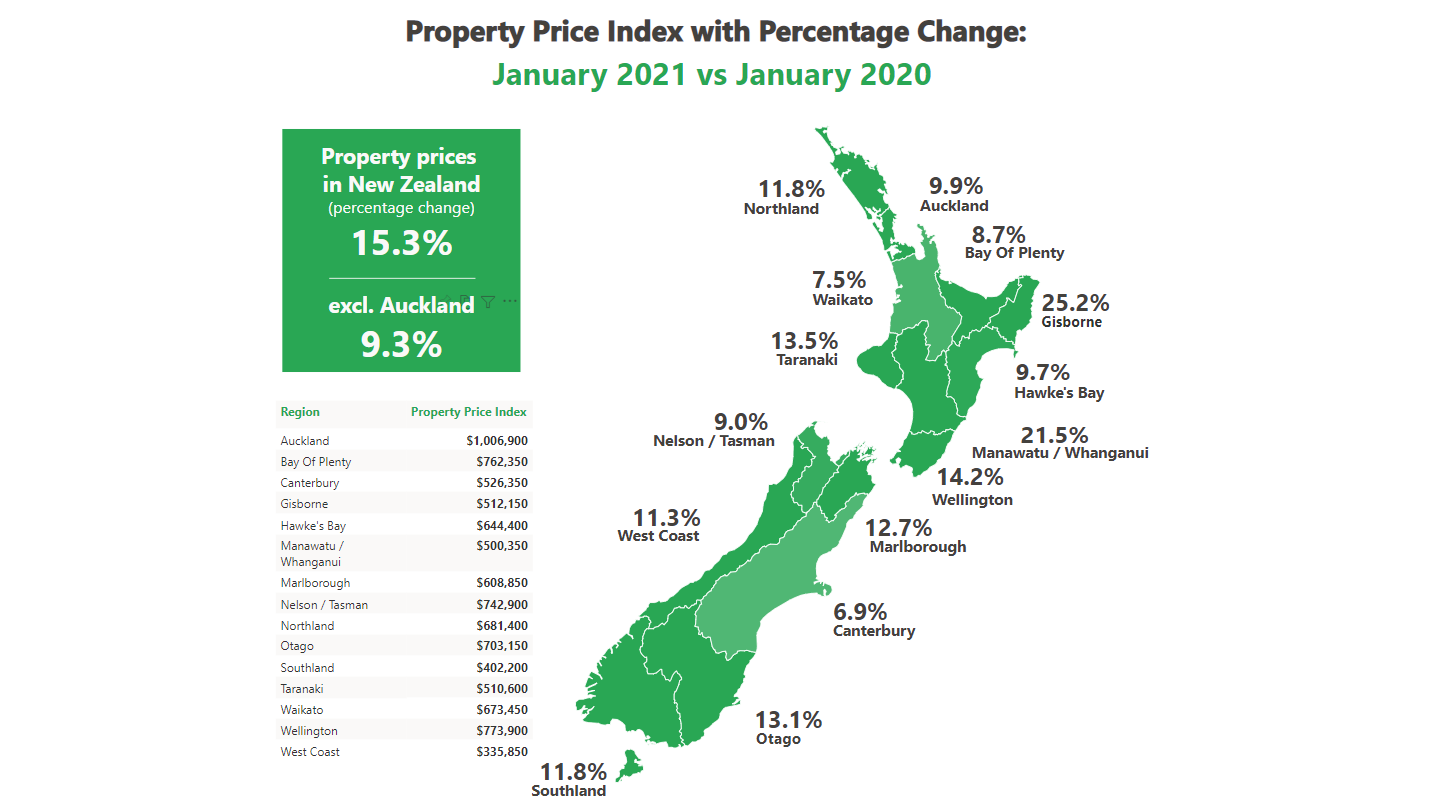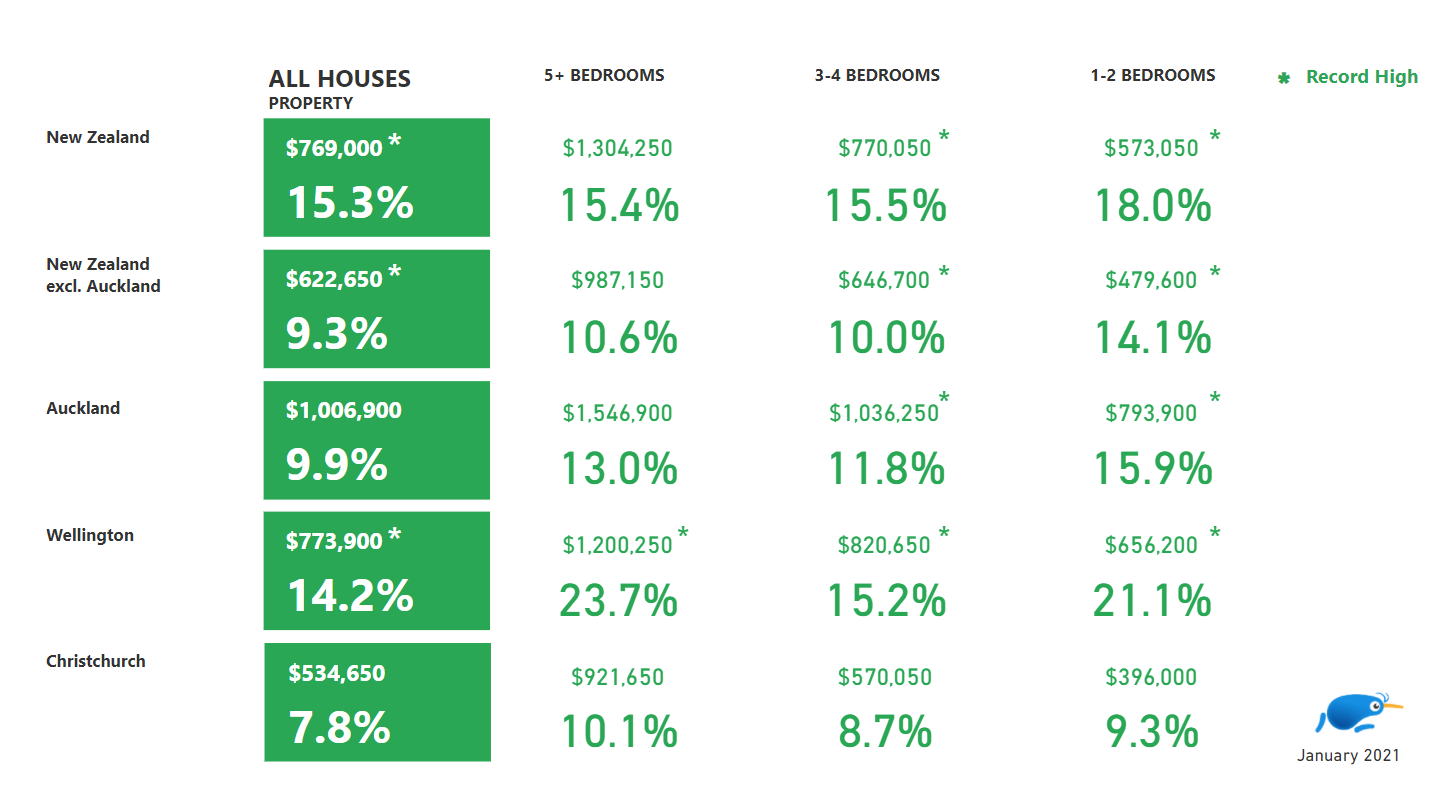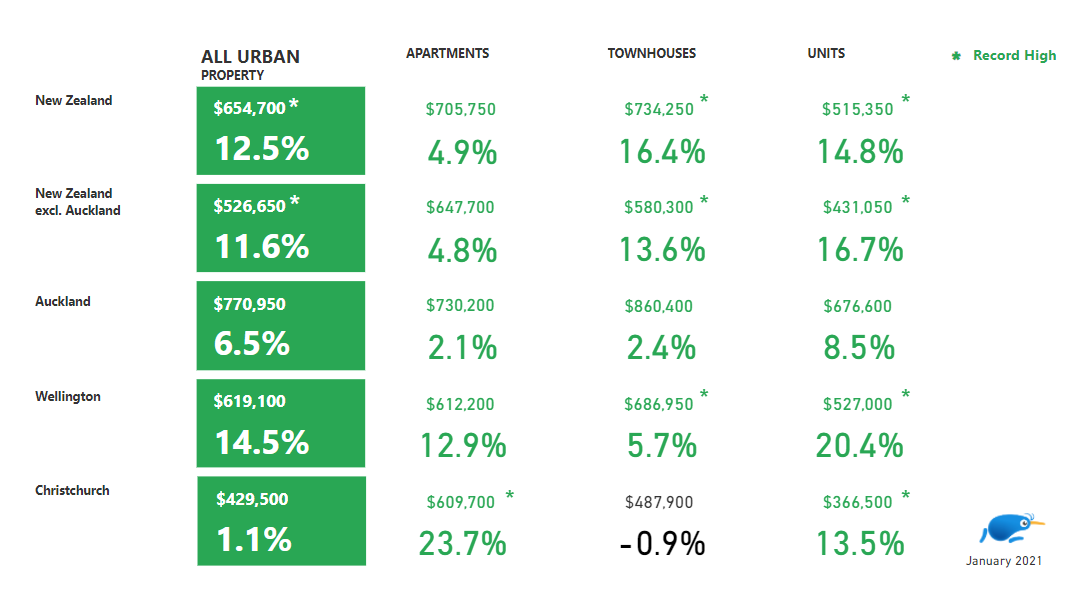News Next article
Property Price Index - January 2021
New Zealand’s national average asking price reached an all-time high for the fifth month in a row in January
18 February 202118 Commercial Road, Grey Lynn
New Zealand’s national average asking price reached an all-time high for the fifth month in a row in January after experiencing the largest annual percentage increase on record, according to the latest Trade Me Property Price Index.
Trade Me Property Sales Director Gavin Lloyd said the national average asking price had grown by 15 per cent when compared with January 2020 to $769,000, the biggest year-on-year percentage increase on record. “We haven’t seen a record-breaking streak like this before, with the property market showing no sign of slowing down.
“While this is great news for homeowners, it will be hard to hear for prospective buyers. Particularly those trying to enter the market for the first time who have felt no relief over the last few months.”
Mr Lloyd said new records were set for average asking prices in every region except Auckland and Otago. “The biggest year-on-year increases were seen in the Manawatu/Whanganui (up 21%) Gisborne (up 25%) and Wellington (up 14%).”
National year-on-year demand was up 15 per cent year-on-year, while supply was down by 18 per cent. “As we have seen consistently over the past few months, demand outstripped supply in January which put pressure on the market and pushed prices up.”
Auckland market a slower outlier
Auckland was one of only two regions that did not see an all-time high asking price last month, which Mr Lloyd puts down to an increase in supply. “When compared with January last year, we saw a 5 per cent increase in properties listed for sale in the Auckland region last month.
“This makes Auckland the only region that saw a year-on-year increase in supply, with every other region seeing a drop of at least 4 per cent.”
The average asking price in the region reached $1,006,900 last month after climbing 9 per cent on January 2020. “If we look at Auckland City, the average asking price was a bit higher, at $1,162,700, up 12 per cent on last year.”
| District | Average asking price - January 2021 | ||
|---|---|---|---|
| Waiheke | Waiheke | $1,383,550 | $1,383,550 |
| North Shore City | North Shore City | $1,210,000 | $1,210,000 |
| Auckland City | Auckland City | $1,162,700 | $1,162,700 |
The most expensive districts in the region were Waiheke ($1,383,550) and North Shore City ($1,210,000).
January’s most popular property listing in the Auckland region was a two-bedroom house on Don Croot Street in Kingsland, with an asking price of $550,000. It received 569 watchlists in its first two days onsite.
Looking ahead, Mr Lloyd said we might see the Auckland market slow down even further in February as a result of the level 3 lockdown. “We will be keeping a close eye on the region and how the new COVID-19 community cases impact the housing market.”
Wellington continues its record-breaking streak
Following the national price trend, Wellington also saw its fifth record-breaking month in a row in January. “The average asking price in the Wellington region reached an all-time high of $773,900 in January after climbing 14 per cent on last year.
“The most expensive district in the region was Wellington City, with an average asking price of $863,800.“
| District | Average asking price - January 2021 | ||
|---|---|---|---|
| Wellington City | Wellington City | $863,800 | $863,800 |
| Porirua | Porirua | $794,950 | $794,950 |
| Kapiti Coast | Kapiti Coast | $750,400 | $750,400 |
“Supply has long been a problem for the Wellington property market and in January we saw the number of properties for sale drop by 27 per cent when compared with the same month in 2020. Demand, on the other hand, continues to rise and in January the listing views on properties for sale in the Wellington region was up by 3 per cent year-on-year.
Mr Lloyd said it’s tough for first home buyers. “Kiwis trying to take their first step into the property market in Wellington are not only facing record-breaking prices, but there’s a lot less stock on the market and more people trying to buy. Unfortunately for prospective first time buyers, unless this situation changes it will only get tougher.
“January’s most popular property listing last month was a three-bedroom house on Ngaio Gorge Road that received 524 watchlists in its first two days onsite. It had an asking price of $550,000.”
13 out of 15 regions see the highest average price of all-time
In January, every region except Otago and Auckland saw record prices, with a number of regions reaching average asking price milestones. “The average asking price in Southland cracked $400,000 for the first time - at $402,200.
“The average asking price in Manawatu/Whanganui also entered the $500,000+ bracket for the first time at $500,350.
“An increase in demand was seen across the country in every region except Gisborne, while supply was down, when compared to last year in every region except Auckland.”
Small and medium sized house prices reach new high
The national average asking price for small (1-2 bedrooms) and medium (3-4 bedrooms) houses reached an all time high in January. “The largest increase was seen for small houses, with the average asking price seeing an 18 per cent year-on-year increase.”
Mr Lloyd said the national average asking price for townhouses and units reached an all-time high in January. “The average asking price for apartments did not reach an all-time high, but was up 5 per cent year-on-year.”
MORE INFORMATION
About the Trade Me Property Price Index:
- The Trade Me Property Price Index measures trends in the expectations of selling prices for residential property listings added to Trade Me Property by real estate agents and private sellers over the past three months.
- It provides buyers, sellers and realtors with insights into ‘for sale’ price trends by property type and property size.
- The Index is produced from data on properties listed on Trade Me Property in the three months leading up to the last day of each period. Each period’s value is a truncated mean of the complete three months’ worth of listings. This is to better reflect trends in property prices rather than month-to-month fluctuations in housing stock.
- The Index uses an “80% truncated mean” of the expected sale price to calculate the average asking price. This excludes the upper and lower 10% of listings by price, and averages the expected sale prices of the remaining properties.
- It provides an insight into ‘for sale’ price trends by type and size of property. Other reports aggregate property price data across these various properties.
Other news you might like








